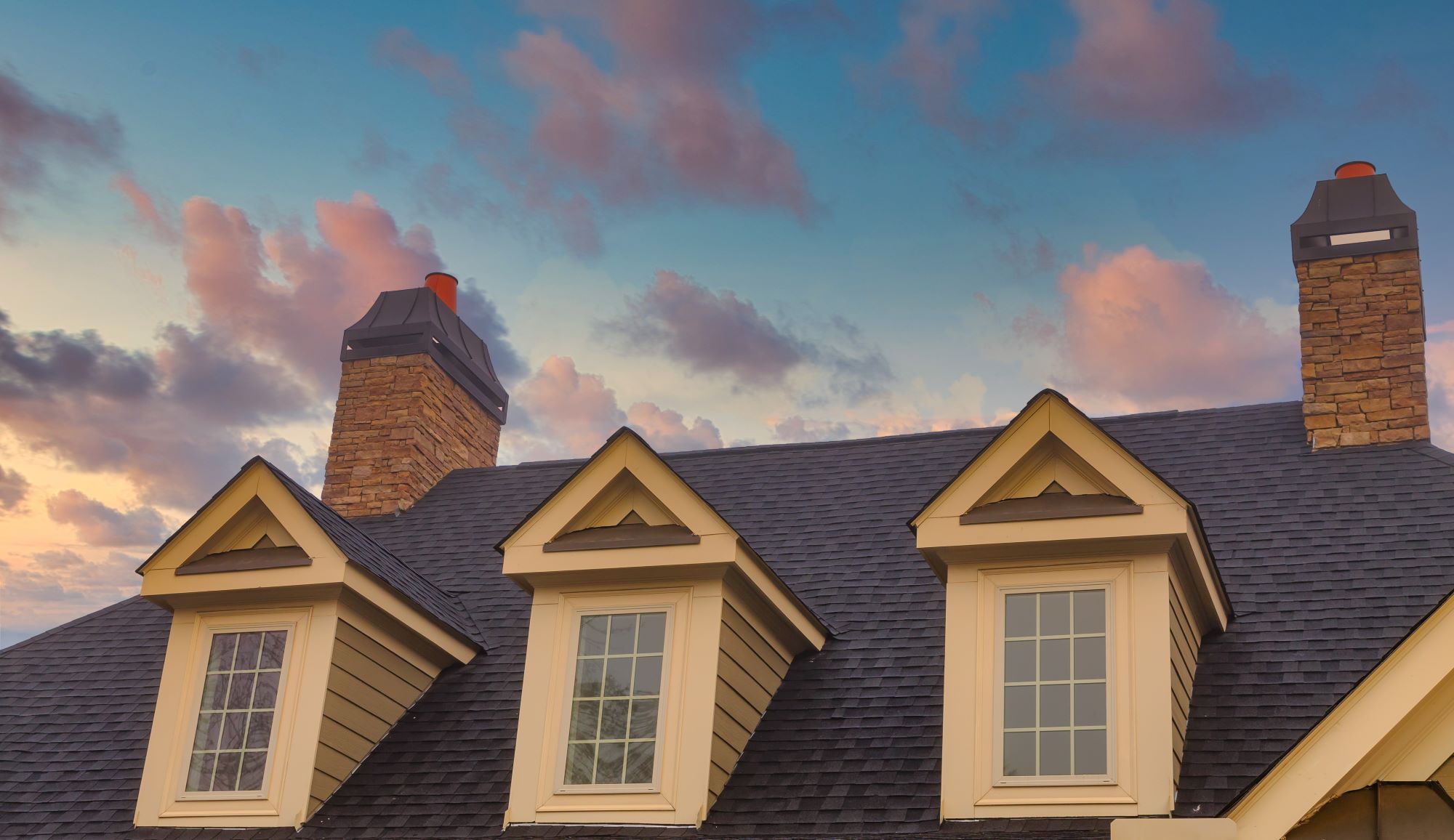Deciding when to invest in a new roof is a significant consideration for any homeowner or commercial property manager. The roof over your head plays a crucial role in protecting your property from the elements, maintaining its structural integrity, and ensuring the comfort and safety of its occupants. Understanding the right time for a roof replacement involves recognizing the signs of wear and tear, considering the age of your current roof, and consulting with professional roofing services. This comprehensive guide will delve into the various factors that signal the need for a new roof installation, whether it’s for a residential home or a commercial building, and the importance of working with a reputable residential roofing company or commercial roof contractors.
Recognizing the Signs of Roof Aging and Damage
The first step in determining the need for a new roof is to recognize the signs of aging and damage. Some key indicators that your roof may be nearing the end of its useful life include:
- Frequent leaks: Regular occurrences of water leakage during or after heavy rain are a clear sign of a failing roof.
- Widespread staining or moss growth: These can indicate moisture retention, which can compromise the roof’s integrity.
- Visible wear: Cracked, curled, or missing shingles or tiles suggest that your roof’s materials have deteriorated.
- Sagging: A sagging roof is a serious issue, indicating structural problems that could lead to a collapse if not addressed.
Considering the Age of Your Roof
The lifespan of a roof varies depending on the materials used, the quality of the installation, and the climate. Asphalt shingles, for example, typically last between 20 to 30 years, while metal roofing can last 40 years or more. If your roof is approaching or has surpassed its expected lifespan, it may be time to consider a roof replacement.
Evaluating the Extent of Damage
Minor issues, such as a few missing shingles, can often be repaired. However, when the damage is extensive or affects the roof’s structure, a new roof installation might be the most cost-effective and safest option. Extensive damage not only compromises the roof’s integrity but can also affect the underlying structures, leading to more significant issues over time.
The Impact of Weather and Environmental Conditions
Severe weather events, such as hurricanes, tornadoes, and hailstorms, can cause immediate and significant damage to a roof. Similarly, roofs in areas with extreme weather conditions, such as heavy snowfall or high UV exposure, may degrade faster than those in milder climates. Regular inspections by a professional roofing service can help assess the impact of these conditions on your roof’s health and longevity.
The Role of Professional Roofing Services
When considering a roof replacement, it’s crucial to consult with professional roofing services. A reputable residential roofing company or commercial roof contractor can provide a thorough inspection, offer expert advice on whether repair or replacement is the best course of action, and deliver high-quality installation services. Professionals can also advise on the best materials for your specific needs and budget, ensuring that your new roof is both durable and cost-effective.
The Process of Roof Replacement
The process of replacing a roof typically involves several key steps:
- Inspection and assessment: A thorough inspection by a professional determines the extent of damage and the need for replacement.
- Choosing materials: Homeowners and property managers can select from various materials, considering factors like lifespan, appearance, and cost.
- Removal of the old roof: The existing materials are carefully removed to prepare for the new installation.
- Installation of the new roof: Professional roofers install the new materials, ensuring proper technique and compliance with building codes.
- Final inspection and cleanup: After installation, a final inspection ensures the quality of the work, followed by a thorough cleanup of the site.
The Benefits of a New Roof Installation
Investing in a new roof installation offers numerous benefits:
- Enhanced protection: A new roof provides superior protection against the elements, reducing the risk of leaks and water damage.
- Increased energy efficiency: Modern roofing materials can improve your home’s insulation and ventilation, leading to lower energy bills.
- Boosted property value: A new roof can significantly increase your property’s value and appeal to potential buyers.
- Peace of mind: Knowing that your property is well-protected and that you won’t have to deal with frequent repairs offers significant peace of mind.
Choosing the Right Residential Roofing Company or Commercial Roof Contractors
Selecting the right professionals for your roof replacement is crucial. Look for experienced, licensed, and insured roofing services with a solid reputation in your community. Ask for references, read reviews, and obtain multiple quotes to ensure you’re getting the best service and value. A reliable company will offer a warranty on both materials and labor, providing additional security for your investment.
Conclusion
Deciding to invest in a new roof is a significant but essential consideration for maintaining the safety, comfort, and value of your property. Whether you’re a homeowner or a commercial property manager, recognizing the signs of a failing roof, understanding the impact of age and environmental conditions, and consulting with professional roofing services are critical steps in the process. By choosing a reputable residential roofing company or commercial roof contractor, you can ensure that your new roof installation is performed correctly, providing long-term protection and benefits for your property.
- Roofing Company Denver CO
- Roofing Company Fort Collins CO
- Roof Installation Denver CO
- Roof Installation Fort Collins CO
- Roof Repair Denver CO
- Metal Roof Installation Denver CO
- Metal Roof Repair Denver CO
- Flat Roof Installation Denver CO
- Flat Roof Repair Denver CO
- Tile Roof Installation Denver CO
- Tile Roof Repair Denver CO
- Commercial Roofing Denver CO
- Roofing Company Littleton CO
- Roofing Company Colorado Springs CO
- Roofing Company Boulder CO
- Roofing Company Arvada CO
- Roof Installation Littleton CO
- Roof Installation Colorado Springs CO
- Roof Installation Boulder CO
- Roof Installation Arvada CO
- Roof Repair Fort Collins CO
- Roof Repair Littleton CO
- Roof Repair Colorado Springs CO
- Roof Repair Boulder CO
- Roof Repair Arvada CO
- Commercial Roofing Fort Collins CO
- Commercial Roofing Colorado Springs CO
- Commercial Roofing Boulder CO
- Roofing Company Longmont CO
- Roof Installation Longmont CO
- Roof Repair Longmont CO
- Metal Roof Installation Longmont CO
- Flat Roof Installation Longmont CO
- Home Remodeling Longmont CO
- Commercial Roofing Longmont CO
- Commercial Roof Replacement Denver CO
- Commercial Roof Replacement Longmont CO
- Commercial Roof Installation Denver CO
- Commercial Roof Installation Longmont CO
- Commercial Roof Company Denver CO
- Commercial Roof Company Longmont CO
- Commercial Roof Contractor Denver CO
- Commercial Roof Contractor Longmont CO
- Window Installation Denver CO
- Window Installation Longmont CO
- Window Contractor Denver CO
- Window Contractor Longmont CO
- Window Replacement Denver CO
- Window Replacement Longmont CO
- Window Installation Company Denver CO
- Window Installation Company Longmont CO

